-
Posts
1,175 -
Joined
-
Last visited
-
Days Won
8
Content Type
Profiles
Forums
Blogs
Gallery
Events
Store
Posts posted by demir
-
-
Thanks again.
0 -
Thanks Don,
Thanks for the very clearly documented information.
So the medal I shared here in my earlier thread has to be named "6.25 Incident Participation Medal". It is Korean War Service Medal - Type 2 according to your research. Don't you thing it would have been better should you name it 6.25 Incident Participation Medal-type 2 if the name of the medal is "6.25 Incident Participation Medal" why still call it Korean War Service Medal.
I am quoting your writing from http://home.earthlink.net/~kwsm/ on the subject here:
"Korean War Service Medal - Type 2
At some point in time, the Korean government must have realized that they could not afford to manufacture a million or more of the enameled Type 1 KWSM. They may also have been influenced by the fact that service medals are rarely done in enamels. The medal and box pictured on the left are original Korean War issues. On the right I have digitally enhanced/lightened a picture of the reverse. The line down the center says "6.25 Incident Participation Medal". The rocker across the bottom says: "Republic of Korea". Most of the Korean War Service medals issued by the Korean government, were manufactured by a company called Jung Il Sa. According to Mr. Chang Hui-kwan, the son of the original owner, they have produced this medal with both a dark and a light planchet. Since these are legitimate pieces, I refer to the darker pieces as Type 2 and the lighter planchets as Type 2A.
0 -
Hi
If there was no Austrian red and white Medal Ribbon which has to be worn in the second button hole of the tunic then, IMHO it is the ribbon of the TWM. It was worn through the secong button hole of the tunic. Although the position is against the Turkish Army Order no.19. According the second article of this Order " other ribbons belonging to the medals of other countries can only be attached under the War Medal ribbon mentioned in the article 1 of this Order".
But since he is not Ottoman he was bound to his Army's regulations.
Regards
Demir
Here is a good example. The picture of Enver Pasha, the Minister of War
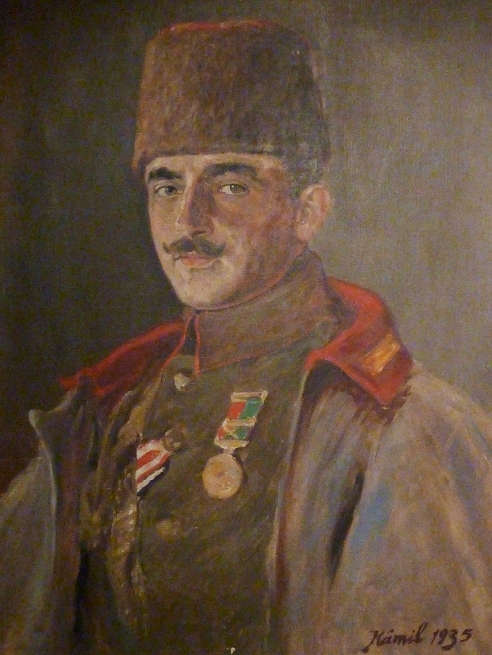 0
0 -
Demir,
The Rothe marks look odd to say the least any chance of an enlargement.
With best wishes
Paul
Sorry, I got it from web so no better picture
Regards
Demir
0 -
With the help of very recently learned information and I think it is a correct answer: the answer to question 1 is: the maker of this Medal which has the mirror image of the obverse tughra is : (E.S) Ernst Schneider, Ludenscheid
0 -
Hi demir,
I have basically a problem with the manufacturer St&L.
Here is my medal, marked with "E.S.". But I don't know, by whom it is stamped, the maker or the seller.

Uwe
Hello,
I think this question is solved with the help of an other forum friend Konstantin.
E.S is most probably the name of the company: Ernst Schneider, Ludenscheid
Regards
Demir
0 -
In this case please allow me to ask some questions:
A: When do the Germans started to use the Ges. Gesch. sign for this purpose. Is it the 30s. I found some Ges. Gesch. pictures which has both the Ges.Gesch sign and the the maker name/mark on them and they are all 1930 era.
1. http://gmic.co.uk/in...nk/page__st__20
2. https://www.google.c...iw=1366&bih=653
3. http://www.quanonlin...nate_dagger.php
B. If the patent is complete, registration is finished which maker (jeweller) owns the patent since there is no patent number on the pin?
C. What is patented the pin or the medal? The medal do not resemble any known medal makers style. It look likes the Ottoman made (bigger picture) lacquer painted medal except the concave arms.
D. Is it possible that some maker copied the Ottoman made medal and applied a different style pin and put Ges. Gesch. on the pin, and owned the patent?
E. If it is only the pin, could it be the case in BB&Co. medals; that the medal had been made by some producer/maker and the pin is BB&Co?

Demir
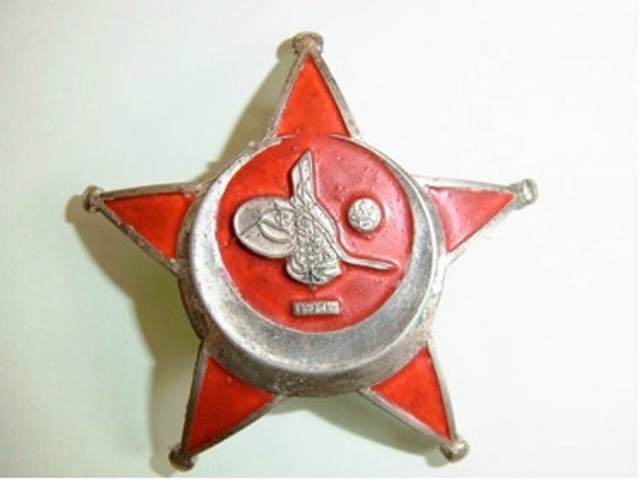
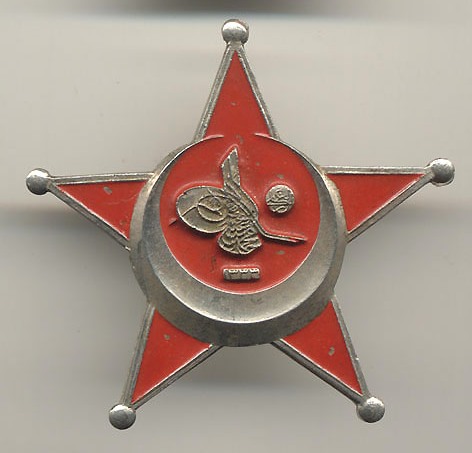 0
0 -
Hello,
Here is another TWM copy which has "legally protected/registered" Ges.Gesch" (gesetzlich geschützt) sign on the pin.
Why or from what it is protected from or registered to whom?

Interesting!
Demir
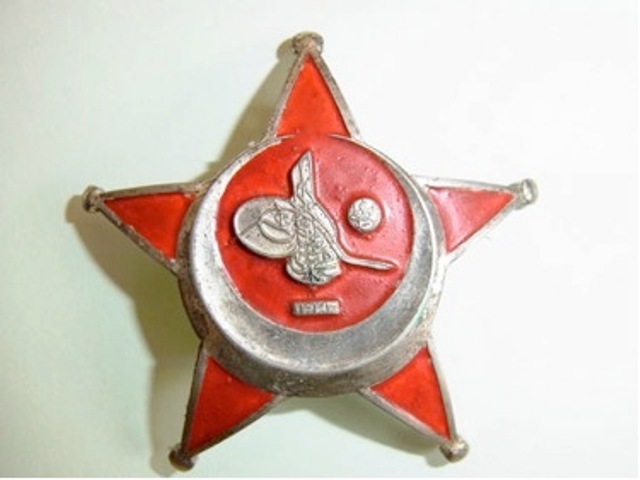
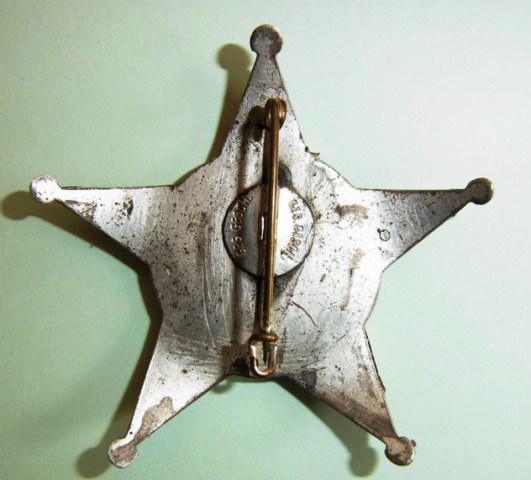
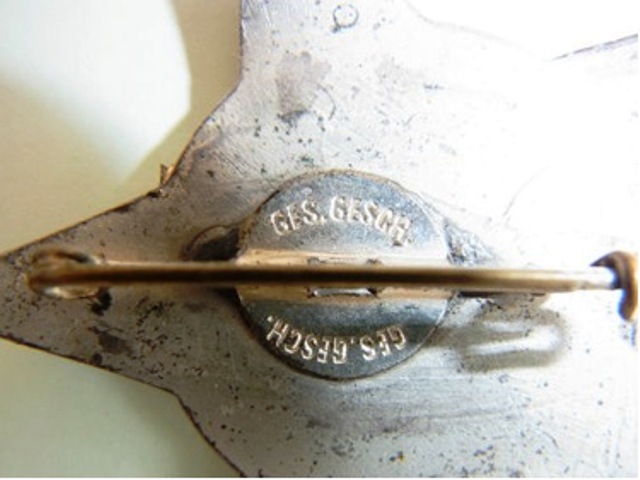 0
0 -
Hi,
Here is a Rothe, Wien maker marked copy/replica of the Turkish War Medal.
I does not look kosher to me.

Tughra's position is not also right, the maker even did not bother to check the position.
There is no need to mention that the tughra is not depicted correctly, as it is the case in most of the European made TWMs.

I think this is one of the Rothe, Wien items mentioned in :
Austrian Hallmarks on Orders and medals
http://gmic.co.uk/in...-orders-medals/
Regards
Demir
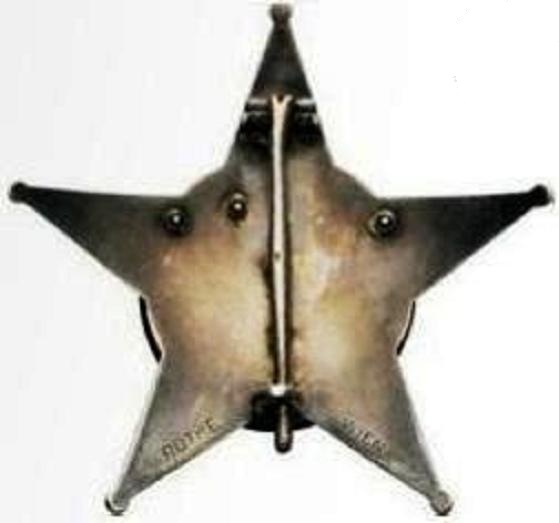
 0
0 -
Rank insignia were applied over branch color collar tabs since 1920 in the Turkish Army. The colours are still in effect with minor changes.
The picture is taken from: http://www.turkeyswar.com/army/ranksuniforms.htm
Branches - Collar Tab Color - Textile (From the table made by Col. Türker Geçer)
Briagadier to Field Marshal - Brick/tile red - Broad cloth
General Staff Officers - Light Purple Brown/Light cherry color - Broad cloth
Infantry and machine Gun- very dark green- Broad cloth
Cavalry and Cavalry Machine Gun- Silver (Ash Color) -Broad cloth
All branches of Artillery and Artillery Observers: Dark Navy Blue- Broad cloth
Engineers - Blue- Broad cloth
Pilots- cerulean (light blue)- Broad cloth
Transportation and Cars- purple- Broad cloth
Quartermaster and Mechanical Engineers - Light Purple- Broad cloth
Map makers-Cartographers- Green- Broad cloth
Ammunition and War Equipment Production- Slate-colored, dark gray (black)- Broad cloth
Gendarmerie- Light Navy Blue surrounded by Red-Broad cloth
Medical Doctors- Dark Purple Brown/Dark cherry color- Velvet
Veterinary- Black- Velvet
Pharmacists- sprout color (light gren)- Velvet
Musicians- Violet- Velvet
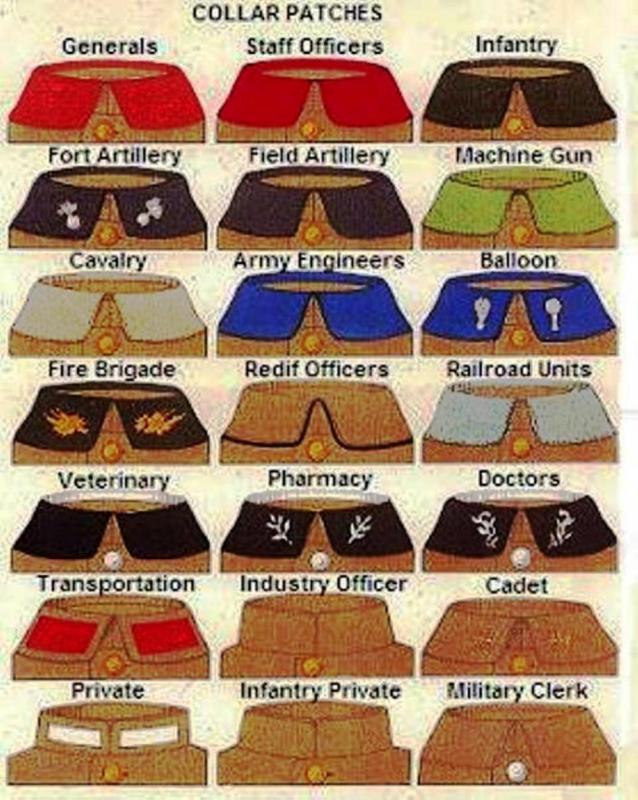 0
0 -
File Name: Rank Insignia used in the Turkish Army since 1909
File Submitter: demir
File Submitted: 28 Oct 2012
File Category: European States
Officer Rank Insignia used in the Turkish Army
1909 - 2012
By : Instructor Col. Kadir Türker GEÇER
Silahlı Kuvvetler Dergisi (Journal of the Turkish Armed Forces) Ocak (January) 2012,
ANKARA,TURKEY
Sayı (Issue No): 411
Pages 68-85,
Edited by: Demir Erman
0 -
Minor changes have also been made in 1964 (Picture 21).
1964 Uniform Code is still in use, but minor changes have been made in 2008 and sharper and smaller stars were used.
Regards
Demir
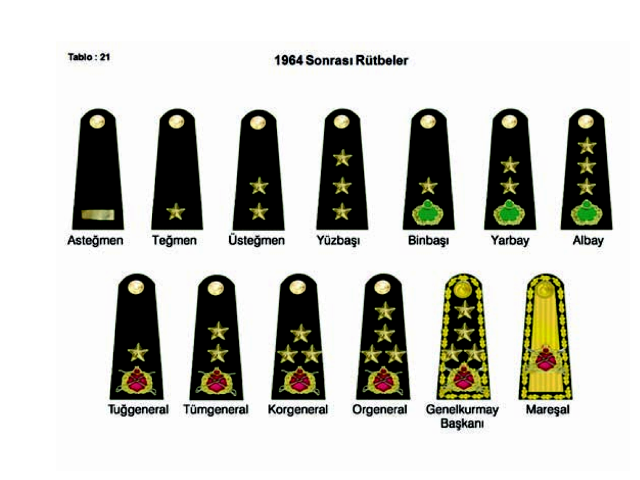 0
0 -
Later some minor changes have been made in 1956 (picture 20 )
 0
0 -
With the May 17, 1947 Army Uniform Decree, which came in to force on 28 October 1947, radical changes have been made and the stripes which have been used since 1933 been removed. (picture 19)
 0
0 -
With the Decree dated 23 May 1933, the shapes of the ranks have been kept but they were applied to the shoulder straps. Also another rank was established Orgeneral (General – now 4 star). Only Maresal insignia (Field Marshal) was kept on the collar. (Picture 18)
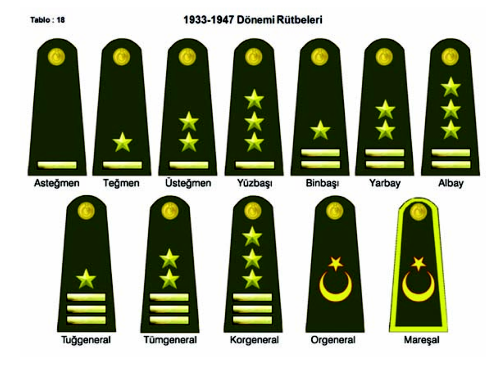 0
0 -
After the foundation of the Turkish Republic, with the Military Uniforms Decree of 10 May 1924 the rank insignia system have been reorganized. Although,in the 1924 Regulation the rank straps were still on the collars, they all were 5x7 cm parellelogram shape, but this time and stripes were added under the stars. They were placed on a broadcloth base which carries the color of the unit. (Picture 17)
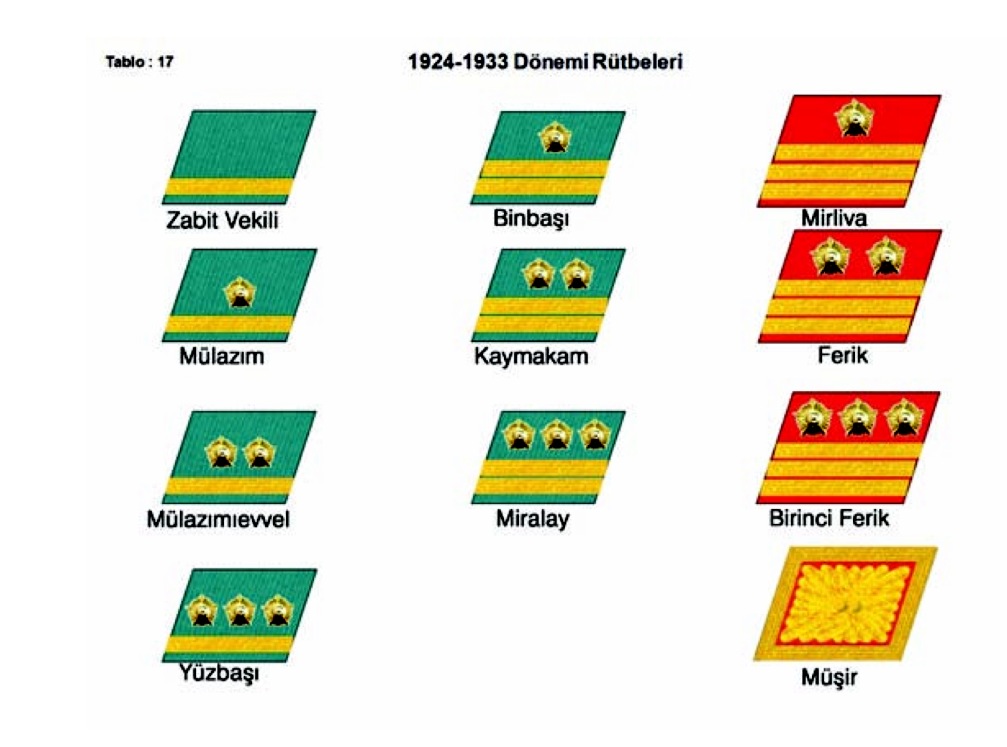 0
0 -
While the uniform system of 1909 has still been used by the Istanbul Government, the Army of the Government of Grand National Assembly in Ankara adopted a different rank insignia system and instead of shoulder straps, collar straps have been enforced starting from 1920. Pallelogram collar straps have been used by the ranks from Mirliva to Musir (Brigadier to Field Marshal) and equilateral triangle colar stripes have been used by the ranks Zabit Namzedi ( The student of the Military school who has been sent to the front before the graduation) upto Mirliva (Colonel). (Picture 16)
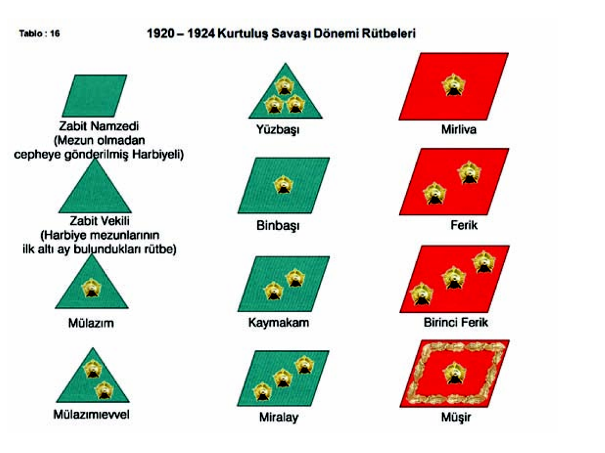 0
0 -
1909-1920
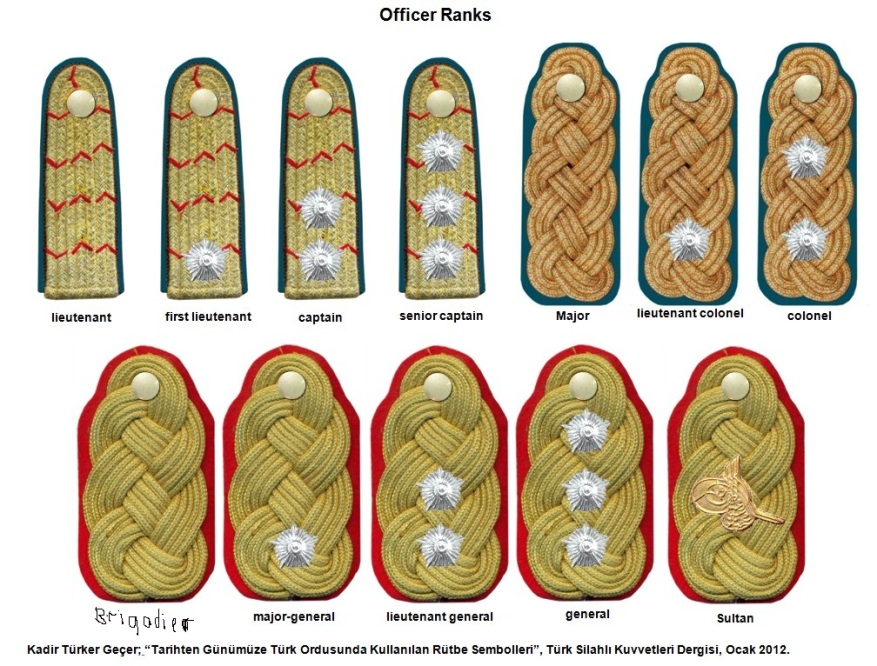 0
0 -
It has always been generally medals, but I thought learning the Officer Rank Insignia used in the Turkish Army starting from 1909 may be interesting to some of our friends. With the permission of the writer Teacher-Instructor Colonel Türker GEÇER, I edited his article which he published in the Military Journal. (Silahli; Kuvvetler Dergisi (Journal of the Turkish Armed Forces) Ocak (January) 2012, ANKARA,TURKEY, Sayi; (Issue No): 411, Pages 68-85)
I will post this edited article in several threads because of the picture limitation) I also will post this to "files" in GMIC.
Ottoman Army / Turkish Republic Army / English
Musir / Maresal / Field Marshal
- ----- / Orgeneral / General 4-star
Birinci Ferik / Korgeneneral / Lieutenant General 3-star
Ferik / Tümgeneral / Major General 2-star
Mirliva / Tuggeneral / Brigadier General 1-star
Miralay / Albay / Colonel
Kaymakam / Yarbay / Lieutenant colonel
Binbasi / Binbasi / Major
Kolagasi / ---- / Senior Captain
Yuzbasi / Yuzbasi / Captain
Mulazimi Evvel / Ustegmen 2-star / First Lieutenant
Mulazimi; Sâni / Tegmen 1-star / Lieutenant
Zabit Vekili / Astegmen 1 stripe / Lieutenant NATO code OF-D
Zabit Vekili / Military School Graduates for the first 6 months
Zabit Namzedi ( The student of the Military school who has been sent to the front before the graduation)
Nefer / Er / Private
Officer Rank Insignia used in the Turkish Army
1909 - 2012
By : Instructor Col. Kadir Türker GEÇER
Silahli; Kuvvetler Dergisi (Journal of the Turkish Armed Forces) Ocak (January) 2012,
ANKARA,TURKEY
Sayi (Issue No): 411
Pages: 68-85
Edited by: Demir Erman
According to the Military Uniform Regulation 5 June 1325 (18 June 1909) only shoulder straps were going to be applied to the Miltary Uniforms. (Picture 15)
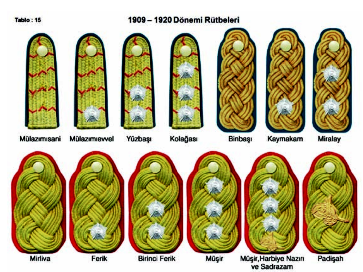 0
0 -
I also would like to add more campaign clasps to ANNEX 3
Gallipoli
Romania
Sakarya (The name of the battle during the Independence War 23 August-13 September 1921)
Tiblisi
Regards
Demir



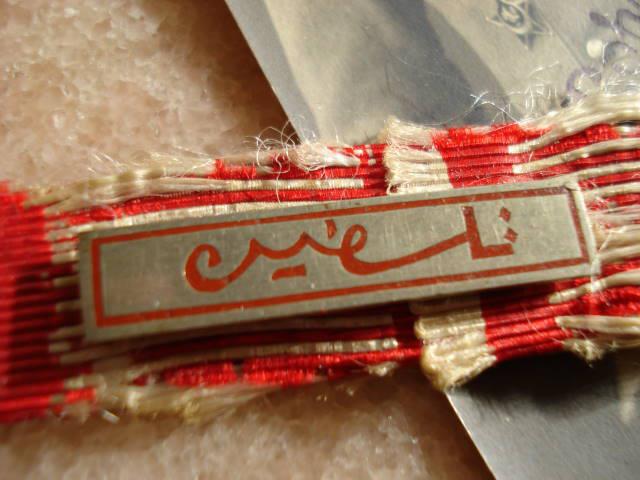 0
0 -
Hi,
For the Gentlemen who have the book, I would like to give the ERRATA list:
ENGLISH ERRATA LIST:
Page/line/footnote
Original text
Corrected text
35/29/
.. von Sanders and by coincedence…..
… von Sanders and by coincidence…..
52/18/
Foreigners usually worn the medal …
Foreigners usually wore the medal …
53/11/
… envelope. Golden gilt imprint ….
… envelope. Silver gilt imprint ….
97/- / annex 17 - 14a
Stainhauer&Lück
Steinhauer&Lück
109/ - / annex 24
GERMAN NURSE
GERMAN NURSE – ALMAN HEMSIRE
Thanks
Demir
0 -
Hello Demir
Thank you for this information. We are all now satisfied that this badge is NOT AN OFFICIAL OTTOMAN AWARD.
Chances are that the badges found in France would be custom-made XIXth Century "fantasy" decorations, possibly made to order or available to French recipients of the Ottoman Order of the Crescent who wanted to have something to show for it.
The Royal Almanach for 1828 lists all French holders of foreign awards and decorations. This book was the official reference of the "establishment".
It mentions eleven holders of the Ottoman Order of the Crescent :
General Comte de La Ville-sur-Illon
Baron des Acres
Baron Jassaud
Marquis de Latour-Maubourg
Sa Seigneurerie le G?n?ral Comte Guilleminot (This general is said to have worn a "Crescent" badge on a neck-ribbon).n)Baron Pr?vot
Sa Seigneurerie le Comte de No?
Marquis de Dreneu
Chevalier de Gualy
Colonel Regnaud de Villatte
Monsieur Boidin
A later issue of the Imperial Almanach in 1855 mentions seven survivors since 1828 :
General Comte de La Ville-sur-Illon
Monsieur Dr?vot (could be Pr?vot previously listed)
Comte de No?
Marquis de Dreneu
Chevalier de Gualy
Colonel Regnaud de Villatte
Monsieur Boidin
Obviously, this order was taken very seriously by the French. The holders would certainly have wanted something to show for it, even if they had not received a formal badge from the Turks. They probably had them made, since they were officially recognised by the King and the Emperor successively, over a very long period ..... As mentioned earlier, a portrait painting of General FOY is known to exist with the badge worn around his neck.
I will be pleased to report the result of the auction when the smaller badge and the miniature will be put up for sale. It is fully understood by now that the badges were local productions. But they do have appeal to collectors of foreign awards to Frenchmen. The important thing is to undestand as clearly as possible what they truly are, and this debate has been and remains very enlightening.
Thank you all. Best regards
Veteran
Here is the picture of Armand Charles Guilleminot's Lieutenant-general, Ambassador to the Ottoman Empire 1824-1831 (http://fr.wikipedia....les_Guilleminot) who has the said order on his neck.
Demir
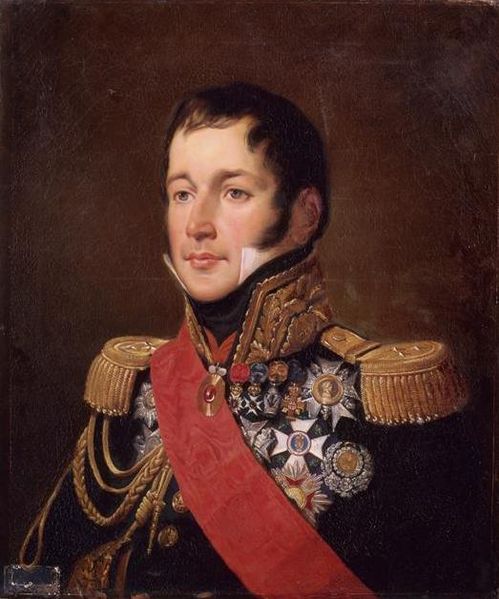 0
0 -
What do you think of this (I don't remember where I found this photo, may be a forum) ?
The central badge is identical to that of the illustration in PERROT, A.M. Collection historique des Ordres de chevalerie civils et militaires etc... Paris 1820 (see previous page) so, after all, this was a real order and not a fanciful one.
Hi,
The medal on the left is Vaka,-i Misriye instituted by Sultan Selim III (attached picture) the miniature one is a lovely unofficial medal.
The interesting point is this medal is given to those who helped to win the war against the French when they invaded Egypt in March 1801.
Demir
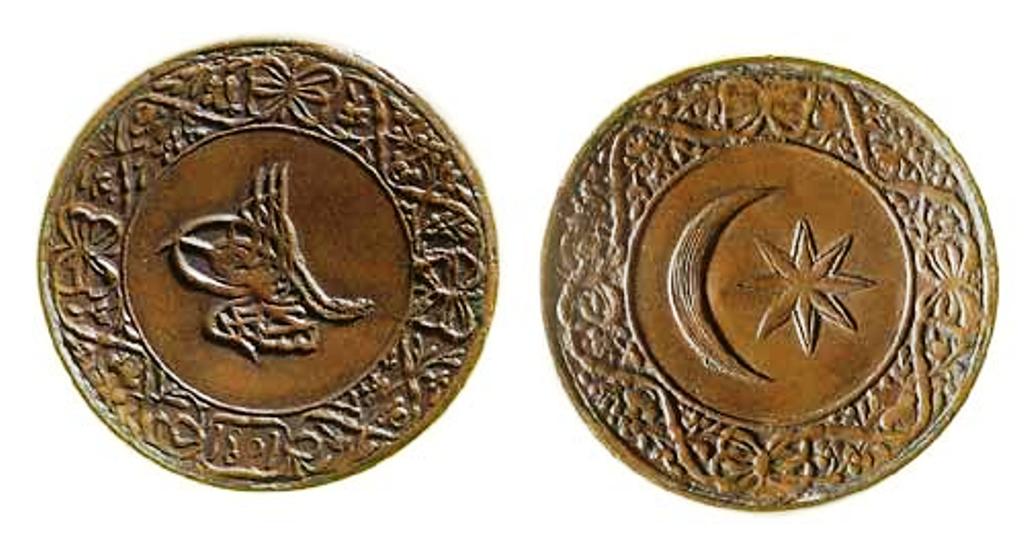 0
0 -
Lord Nelson
Both of his awards look similar to the Perrot.
Website with some info.
http://www.stjoachim....org/nelson.htm
As mentioned earlier this medal is not an official medal but a creation. I think a French jeweller has taken the 'crescent and star' of the medal of Vaka-i Misriye (Egypt incident) (the medal shown in the picture attached to "bear"s thread (the medal just right side of the right pocket, which has star and crescent on it). Ottomans in none of their orders used the turban- hat.
Also it has nothing to do with the Turkish Republic, actually all the Ottoman medals and orders has been banned with the law no. 2590 which was published in the Official Gazette dated 26.11.1934.
Here are two more photos which were recently published in my facebook forum.
Demir

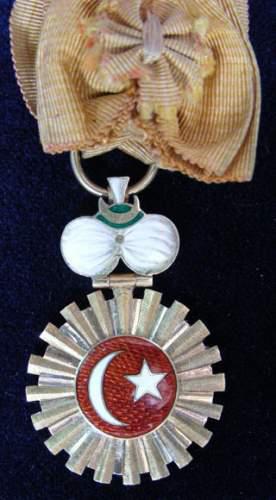 0
0




Medal of ''donanma iane'' 1912
in Turkey
Posted
Hello Avşar,
Yes I know. I bought it with the nice figures (Tezhip) around the Tughra. It looks nice.
Best wishes
Demir